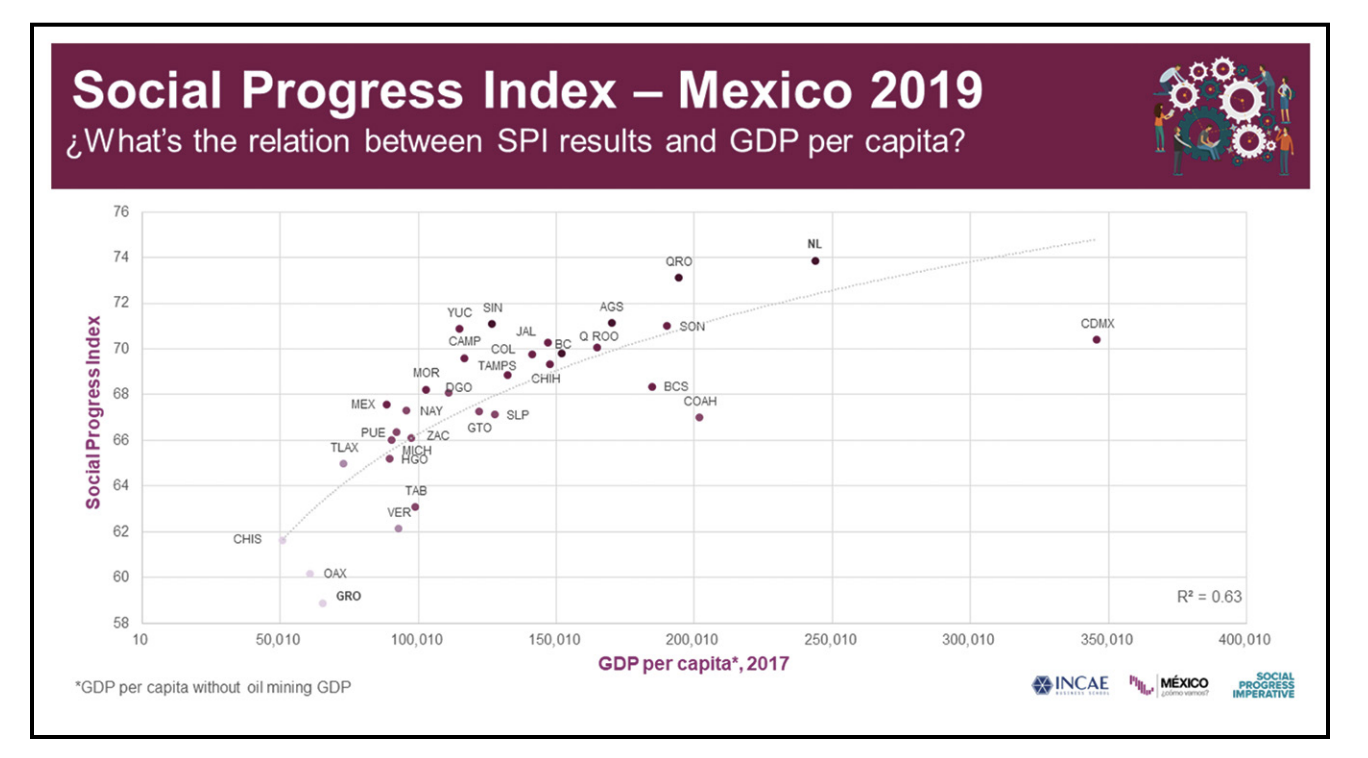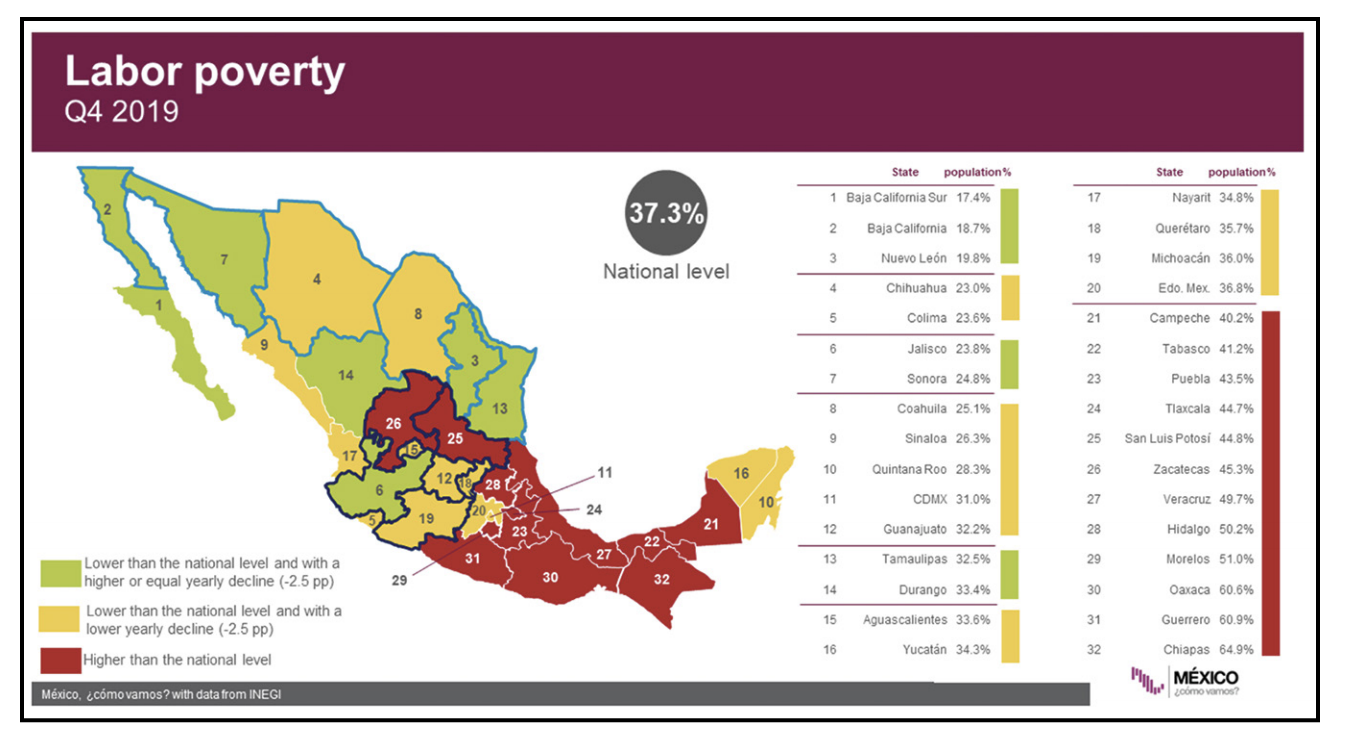“LA MAÑANERA” – THE PRESIDENT’S MORNING PRESS CONFERENCE
On January 30th, 2020, a few moments after Mexico’s Statistical Agency (INEGI) released its advance estimate of the country’s economic growth, Mexico’s President–Andrés Manuel López Obrador (AMLO)–stood in front of reporters for his daily morning press conference. It had become harder for AMLO to dodge the concerns posed by analysts and journalists about the perception of Mexico’s lack of economic growth. As INEGI announced that the country’s GDP had shrunk for the first time since the financial crisis of 2008–2009, the perception had become a reality. The fact that the second-largest economy in Latin America, which also happens to be the southern neighbor of the largest economy in the world, had shrunk by 0.5% at an annualized rate was worrisome for investors, analysts, credit rating agencies and international organizations.
It would be fair to believe that this number would make Mexico’s president anxious as well. Especially since it reflected the results of his first year in office after he had vowed during his campaign trial to make the country grow 4% on average per year. The president’s reaction, however, was quite the opposite. AMLO insisted that even though low growth was expected, the parameters to measure welfare were changing. He argued that, according to his own data, welfare had increased: “There may not be growth, but there’s development and well-being”.
To be fair, AMLO has a point, although not necessarily on his confidence that Mexico’s welfare is increasing. This is the story of one of the most powerful indicators in economics, GDP, the false dichotomy that it has been subject to, and what Mexico’s civil society is doing to reconcile the importance of economic growth with social and economic wellbeing.
THE BIRTH OF GDP
Once called by the US Department of Commerce one of the “great inventions of the twentieth century”, the Gross Domestic Product (GDP) might seem one of many metrics to measure the behavior of an economy. History has proven, however, that this variable has the power to swing financial markets, influence elections, disrupt governments and determine the agenda and political discourse for a long time. GDP has gained incredible relevance, probably more than what his creator, Simon Kuznets, might have imagined. A metric that was originally intended in 1934 to measure the value of the final production of goods and services of an economy during a specific period of time, seems now to be governing the world’s economic policy. But with such great power, comes great resistance.
Those who argue that we should get rid of GDP might not recall that less than a century ago, in the wake of the Great Economic Depression of the early 1900s, it wasn’t an in-depth analysis of economic indicators what made policymakers realize the seriousness of the situation the world was going through. It was, in fact, barely the collapse of stock market. Economists and policymakers were taking decisions on blurry indicators such as stock prices and incomplete information of industrial production. There was no consensus on how to comprehensively measure a country’s national income. Policy makers acted almost blindly: possibly deciding the economic fate of nations based on incomplete and semi-reliable data, hoping for the best.
This was the case until Kuznets was tasked to evaluate the recovery of the US economy in the aftermath of the Great Recession. In this context, GDP marked a clear before and after; it made it possible to make more informed choices, to allow for international comparisons, and to become a standard tool for sizing up a country’s economy. GDP eventually became a homogeneous metric. Policy makers, politicians, economists, businessmen used it as a general indicator of a country´s economic health. Slowly, but surely, the meaning of GDP started to change in people´s mindset. While it was designed to measure production, we started to mistake it for progress, for development, even for well-being. Kuznets had made it very clear that this was not its purpose, he even claimed that “the welfare of a nation can scarcely be inferred from a measure of national income”. But how can we define welfare? How can we make up our minds on what progress consists of? Can we find a common ground on our understanding of might be more easily understood when applied to a specific country? Maybe Mexico can serve as an example.
MEXICO AND THE FLAWS OF GDP
Like any metric in social sciences, GDP has advantages and flaws. Its flaws can be put into perspective when analyzed in the case of Mexico. Economic growth – the growth rate of GDP – reflects the change in the production of a country. Considering that Mexico is the world’s 14th largest nation, as measured in square kilometers of land area, national GDP growth falls short of giving an exhaustive outlook on the country’s economic performance. This can be easily depicted by noticing Mexico’s historical regional disparity.
In essence, while the country has grown at an average rate of 2.1% in the past five years, 21 out of 32 states have outperformed this figure. The states of Baja California Sur, where Cabo San Lucas is Located, and Quintana Roo, where Cancun’s tourism industry fuels economic activity, have grown 7.6% and 4.4% respectively on average during the same time period. On the contrary, the oil-rich states of Campeche and Tabasco, both located in Southern Mexico, have watched their economic activity shrink at an average rate of (-)5.5% and (-)4.9% per year respectively. While some could argue that this measurement issue can be solved by analyzing instead economic growth at the state level, the problem remains due to disparities within states.
Another hurdle of trying to measure economic welfare through GDP is the lack of guidance it offers. Even if one argued that economic growth is a synonym of wellbeing (which is not), the policy to improve development would then become increasing production for the sake of it. Even though economic growth is a crucial element of development, making it the only target of a development strategy is not enough. GDP fails to distinguish environmentally sustainable economic growth and the one that results from the careless exploitation of natural resources. It also fails to acknowledge how the value of goods changes as a result of technological progress. For starters, each region faces different challenges and binding constraints for growth. In the case of Mexico, most of the states located close to the border with the US found the North American Free Trade Agreement (NAFTA) economically beneficial. The elimination of tariffs, as well as their incorporation to an institutional arrangement in which following the law and enforcing contracts, was not optional, marked a difference with the rest of the country. The same logic applies to the Bajío region (Aguascalientes, Guanajuato and Querétaro) located in central Mexico, where industrial innovations and high – skilled manufacturing are the main economic activities, and exports play a crucial role. Specifically, these states have been growing at a higher rate than the country as a whole, and labor poverty and informality are lower than the national figures.
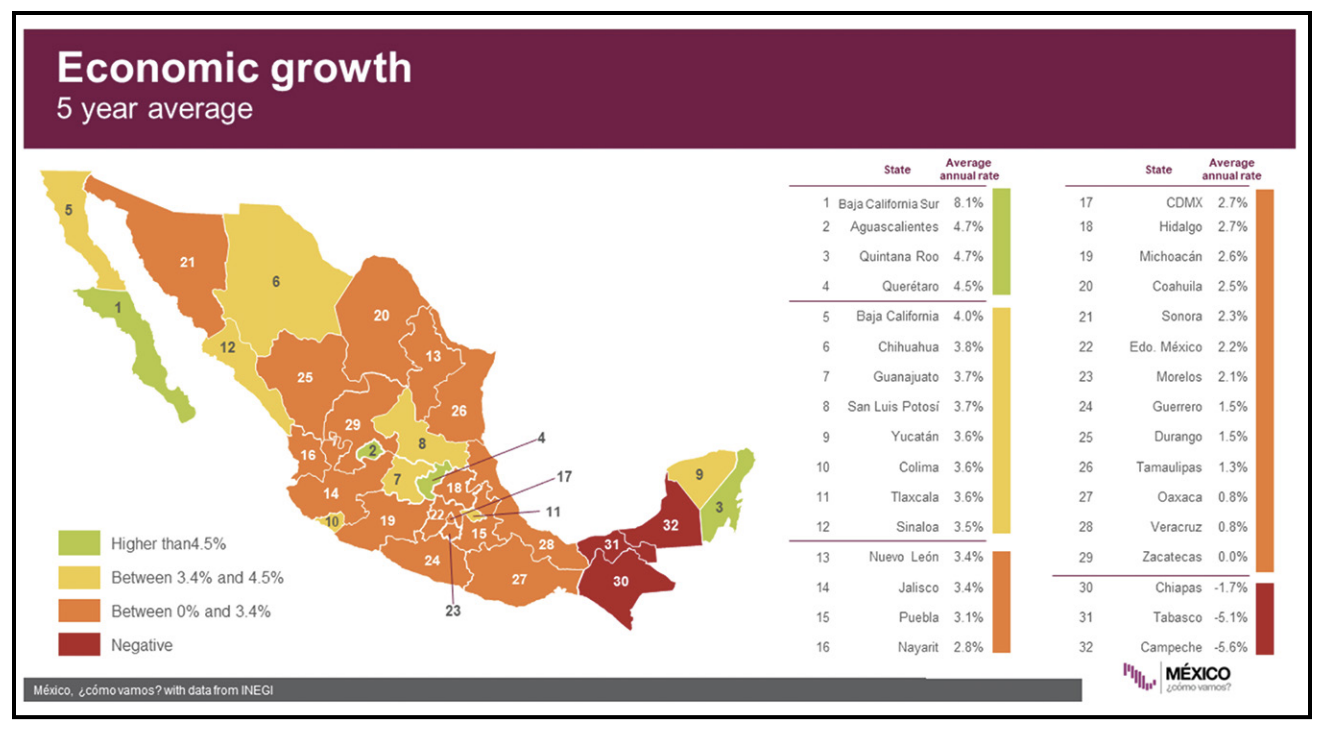
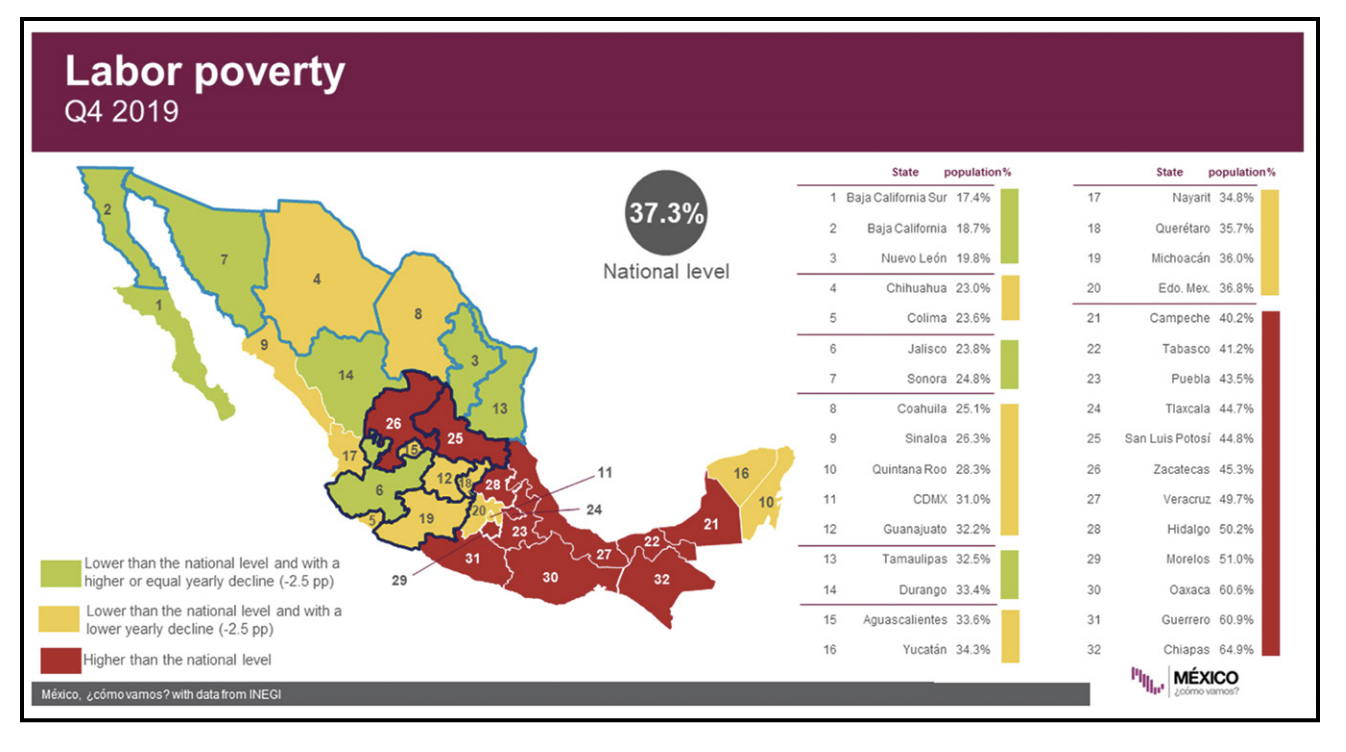
A third, and perhaps more obvious flaw of GDP and economic growth is that it does not measure what concerns people the most. In an era in which people have become the central focus of democracies, talking about abstract concepts, such as GDP, might reflect a disconnection from their reality. People are not interested on economic growth itself, but on the chain of social improvements that might evolve from it. The fact that Mexico’s economy shrank by (-) 0.5% at an annualized rate during 2019 is an intangible fact, but the case that 2019 was the year with the least formal jobs created since the 2009 crisis is real and tangible. The progress on other real and tangible indicators, such as maternal mortality, homicide rate, freedom of press, and teenage pregnancy rates, is what the people are interested in improving. Furthermore, GDP fails to measure other priorities that people value, such as the quality of life, the lack of pollution, access to public spaces and many other things that make up people’s daily lives.
THE MISSING PIECE IN THE DISCUSSION
In this sense, it has been tough for many to understand that GDP and economic growth are simply a metric to measure something different to wellbeing. Many critics have spent more time and energy trying to discredit the importance of GDP instead of building a universal consensus around another metric that can measure development and social progress. There is, however, an opportunity to shift the conversation to find a solution for this controversy. This year, an economics think tank based in Mexico City, México, ¿cómo vamos?, along with INCAE Business School and the Social Progress Imperative, released the first edition of the Social Progress Index (SPI) at the state level in Mexico. Hence, Mexico became one of the 40 countries worldwide creating an index that not only measures social progress with 58 social indicators, but can also target specific policy concerns in a more accurate way and with a more customized approach. In a scenario such as the one faced by the Mexican context, where several different Mexicos seem to coexist, the subnational SPI is a gold mine waiting to be exploited.
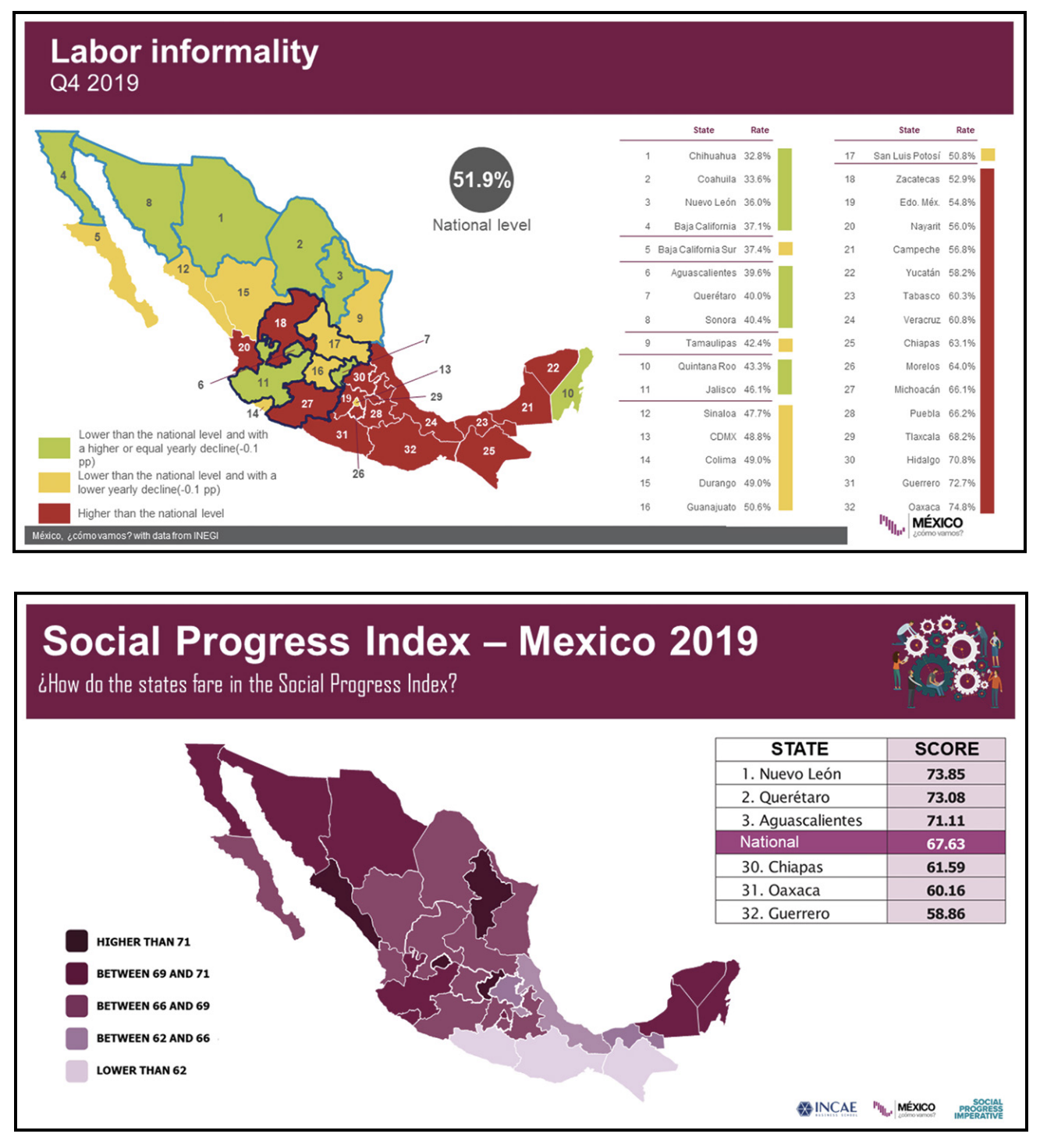
LESSONS LEARNED FROM SPI –MEXICO
Unsurprisingly, the three states with the highest social progress are located either right at the border with the US or in the Bajío region, while the ones with the lowest social progress are located in South East Mexico. Either way, the subnational results depict a strong truth: even though Mexico is among the 15 largest economies in the World as measured by its GDP value, its best-scored states in the SPI are far behind the most developed countries in the world. In essence, if Nuevo León – one of the wealthiest Mexican states and the one with the highest social progress – were a country, its social progress level would be similar to that of Hungary, which ranks 39 out of the 149 countries evaluated. Furthermore, the lowest – scored Mexican states have a social progress level equivalent to that of the Philippines, which ranks 94 out of 149 at a global level. This disseminates the reality that Mexico is a middle – income country, and that most of the nation’s issues are concentrated in the South.
Even though it has been made clear that economic growth is different to social progress, the fact that the states with the highest GDP per capita are also the ones with the highest economic development according to the SPI throws some light on the fact that there must be some sort of relationship between the two indicators. This is one of the many reasons why the Mexican government shouldn’t underestimate the power of economic growth. Similarly, the fact that poverty has a strong negative correlation with SPI in each state displays some hints that by successfully targeting specific indicators of the SPI, there might be an improvement – without assuming causation – not only on the state’s score in the social progress index and wellbeing, but on the general poverty figures. In an era in which real and objective data is constantly being under attack, appealing for the belittlement of a metric as relevant and universal as the Gross Domestic Product (GDP), and blaming it for the lack of accuracy in reporting what it is not meant to report, jeopardizes the current international language of economics. Appealing for its belittlement without proposing anything better is even worse.
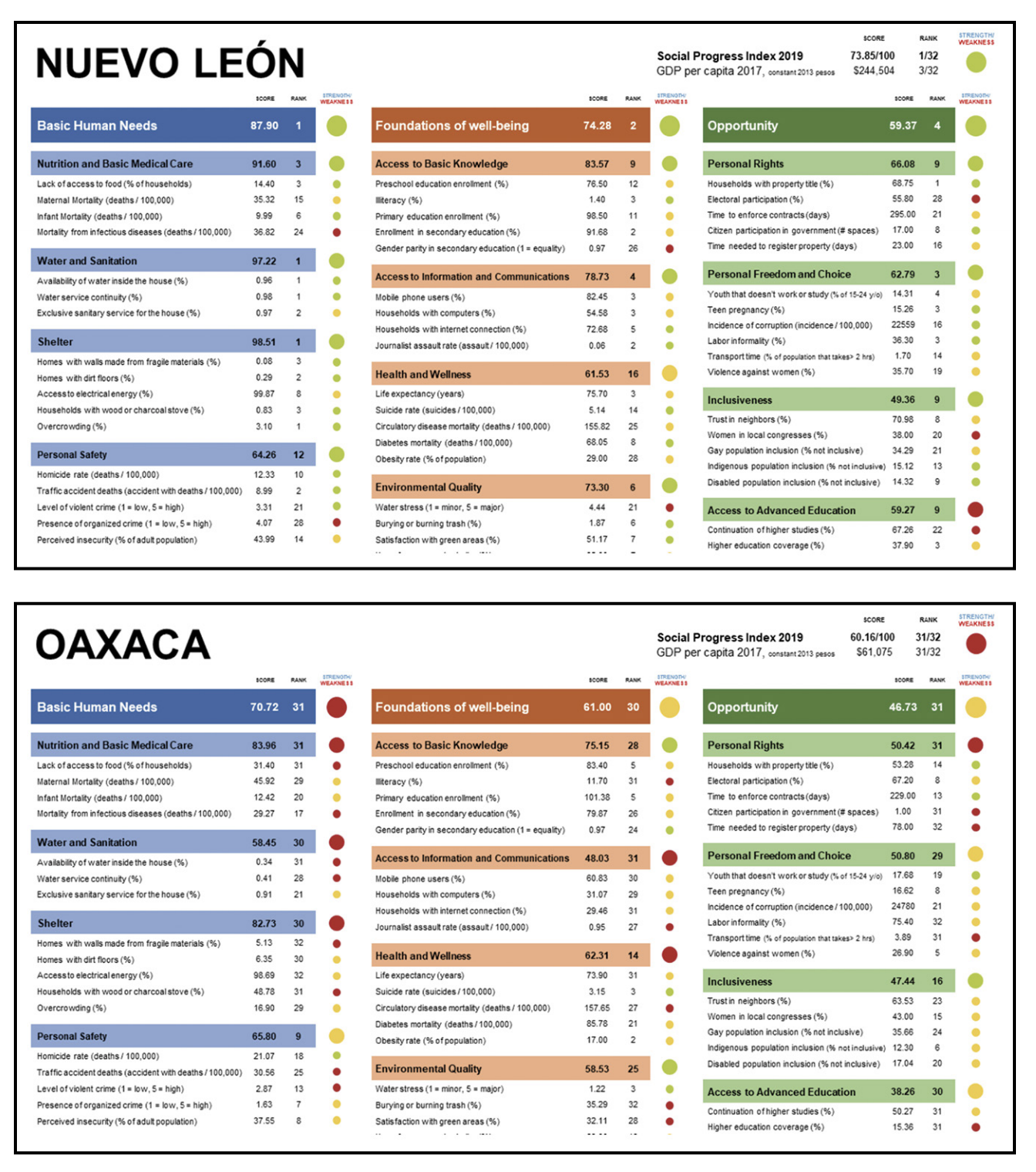
The Social Progress Index, especially the one adapted to the subnational contexts such as the one recently released in Mexico, makes it possible to acknowledge the limitations of economic growth as an indicator to measure wellbeing, while still accepting its coexistence. Furthermore, the SPI is a dream come true for policymakers: it provides a clear path to achieve change and improvements on economic development. As this article is being written, the world is in the middle of a public health crisis. COVID–19, along with the economic and social policy responses that have been implemented to face it, has become a crucial test on the countries’ State capacity and health sector. As many nations have their population on quarantine, economic growth projections for this year are already being adjusted downward. In the case of Mexico, there are estimates claiming that the economic contraction might be more abrupt than the one which took place during the 1994 crisis. The current crisis has also become the perfect example of the importance of social progress. While the COVID–19 crisis will be tough on everyone, those with the highest social progress might be more likely to bounce back faster.
